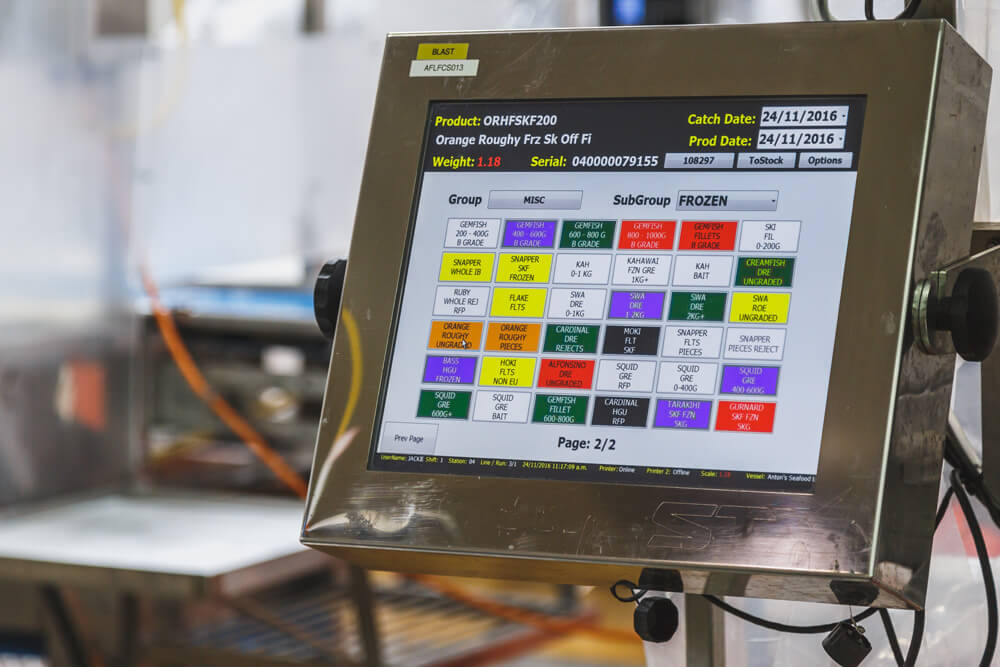Rugged PCs Made for the Factory Floor
Industrial users, taking advantage of more powerful, faster, and less expensive models, incorporated the PC into automation systems. In the past, these PCs needed to be adapted to the conditions found on the factory floor with high temperatures, humid, vibration, shock, contaminants, electrical noise, etc. Today, the industrial user does not have to rely on a modified office PC for industrial applications. Manufacturers have developed industrial-grade reliable panel PCs to survive virtually any hazard environments.
IBM Compatibility
Dominating the industrial PC markets are IBM and compatible PCs. The reasons for this are many users who familiar with the IBM PC, extensive development of DOS-based software, and a variety of add-on hardware now available for IBM compatibles. Faster microprocessors, higher capacity memory, plug-in I/O modules, and serial and parallel communication interfaces are just some of the add-on enhancements which enable the PC to control real-world, factory floor data.
IBM's industrial offerings include the 5531, 7531, 7532, and 7552. The 7552 is designed to be an integral part of plant floor operations, with kits available for mounting for industrial panels, NEMA enclosures, 19-in racks, or floor-standing enclosures. Cooling fans, card shrouds, optional filters, and battery backup to protect the computer from damage in the industrial environment. The 7552 is based on a 16/24 bit, Intel 80286 microprocessor with a 10 MHz clock speed, and standard 512 Kbytes of memory. The system contains seven slots to support peripherals and adapters. Optional real-time interface coprocessors store control programs on 3 1/2 or 5 1/4-in.

Industrialized Packaging
IndTech, Inc. offers a full complement of hardware to fill a 19-in. rack: various microprocessors, real-world analog, and digital I/O modules, monochrome to EGA monitors, and signal conditioning modules. InTech designs its own hardware and writes and supports its own BIOS. The PC-AT industrial computer, the 6100 Series, is fully MS-DOS compatible. Included in the series are an 8 MHz unit, the 6170, and a 10 MHz, no-wait-state, AT-compatible system, the 6191. This computer is claimed to be twice as fast as the IBM 7532. Both systems feature a motherboard design with 12 expansion slots; 80286 processor; 512 Kbytes standard memory; battery-backed, real-time clock; dual cooling fans for up to 55 C operation; and a 238 W power supply to support system expansion. The shock-mounted drive cage holds three 5 1/4-in. half-height disk drives and one 3 1/2-in. drive. The newest computer from IndTech, the 6316, is its first slot card/passive backplane system and also features 12 expansion slots. The 6316, 386-based, can incorporate XT and AT adapter cards on its backplane.
Amdex Corp. offers two versions of each of its XT and AT-compatible systems. The RPC-52 and RPC-55 are PC-XT compatible computers built on 12-slot passive backplanes. RPC-52 is a NEMA 4 enclosed computer with external dimensions of 24-in. high x 20-in. wide x 12-in. deep. An integral heat exchanger is mounted on the front door of the unit, with the computer mounted on the inside of the door. A 19-in. rack mount computer, the RPC-55, has a panel height of 7 in. and a depth of 16 in. Both the RPC-52 and 55 use an 8088 processor with optional 8087. The cooling and air filtration systems in both units ensure a complete air change every 2 sec, minimizing temperature rises. The operating temperature range of the floppy drive system is 4 to 46 C; hard disk systems offer a range of 0 to 55 C.
The PC-AT versions include the NEMA 4 enclosed RPC-82 and the rack mount RPC-85. These systems use an 80286 processor with optional 80287. External dimensions, cooling systems, and temperature ranges are identical to those of the RPC-52/55. Industrialized PCs from Action Instruments include the A-PAC BC-06, -10, and -12, each with 640 Kbytes of program memory, and BC-16, -20, and -22 with 3 Mbytes of program memory. Action's mini PCs are the XT BC-06 and the AT BC-16. These MS-DOS units feature a 6-slot backplane, steel enclosures for noise immunity, an Action BIOS, and operating specifications of 0-60 C, 5-90 percent relative humidity, 2 Gs vibration, and 5 Gs shock. The BC-10 XT and BC-20 AT are Action's benchtop or rack mount units, with 10 slots industrial chassis. BC-10 features a plug-in 8088 CPU card and optional, plug-in bubble memory (up to 2 Mbytes).
Metal shrouds protect the modular components of the wall-mounted BC-12 and -22 for EMI/RFI and vibration immunity. BC-12 uses an 8-slot PC Bus design and an 8088 processor. The BC-22 offers six AT and two XT slots, an 80286 processor, and environmental specifications of 0-60 C, 90 percent relative humidity, and 2 Gs vibration limit. I-Bus Systems manufactures a full line of IBM PC, XT, and AT-compatible computers, card cages, chassis, and software for the industrial user.
The Y88 CPU board features an 8088 processor, onboard 64 or 256 Kbytes of RAM, 256 Kbytes of EPROM, and RS-232/422 console port. The F286 is I-Bus's compatible system. It has an 8 or 10 MHz 80286 processor (zero wait states), 512 Kbytes dynamic RAM, battery-backed clock/calendar, and AT-compatible keyboard port. An I-Bus computer system is created by assembling a CPU board into an I-Bus chassis and adding PC expansion cards to fit the application. Chassis are available with 6, 9, or 15 slots, in tabletop, rack, or wall mount versions.